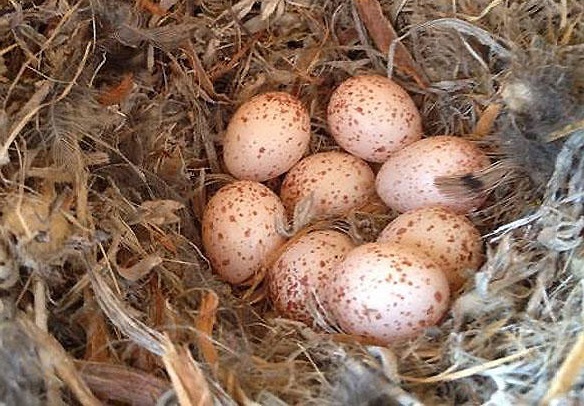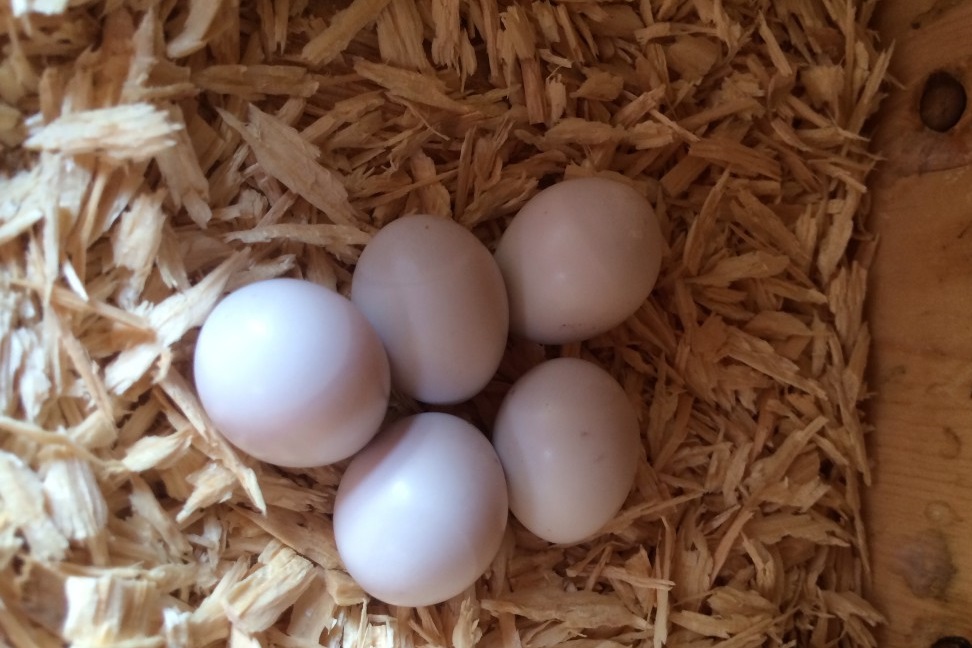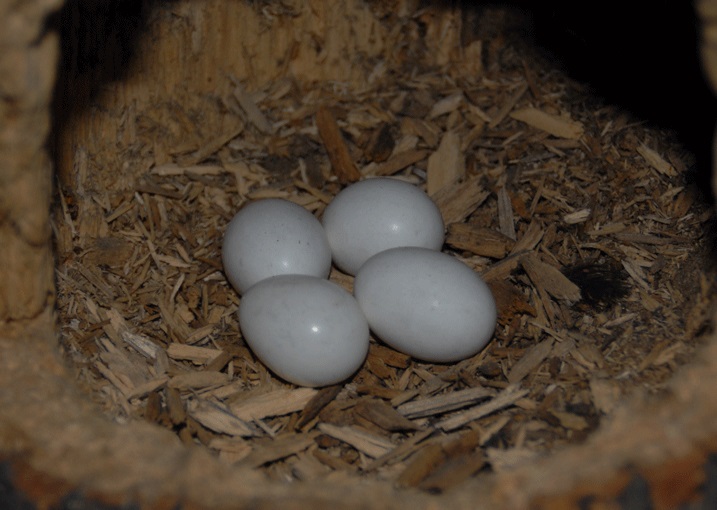

We’re here to help! Wild Yards is a completely free website that is 100% dedicated to helping you create a wildlife-friendly, sustainable yard. Read more
WildYards is reader-supported. When you buy a product through a link on our site, we may earn a comission. Every product is independently selected by our (obsessive) editors and our reviews are unbiased and objective. Read more about our mission or our privacy policy.
Woodpeckers are prominent all across North America – and there are approximately 22 living species of woodpecker native to the US, all varying in size, colors and behavior. Their egg colors vary, too! Have you ever come across woodpecker eggs before?
Woodpecker eggs are distinct in their size, color, and where they are laid. They’re often no larger than an inch long, and you will typically see them in nests between April and July each year.
Below, you’ll find out everything you need to know about woodpecker eggs, including what they look like, and how woodpecker parents share the raising responsibilities.
How many eggs do woodpeckers lay?
Woodpeckers are known to lay between 3 to 6 eggs each, on average. However, this can vary depending on breed, location, and age.
Breeding pairs often share the chores of creating a nest and caring for eggs and their offspring. Some species of Woodpeckers can lay up to ten eggs at a time! As you may imagine, rearing this amount of young is hungry work – so make sure to set up food woodpeckers enjoy to help them along.

How big are woodpecker eggs?
Woodpecker eggs will generally vary in size, too. For reference, the red-headed woodpecker, native to the US, lays eggs of around an inch in length, and an inch in width.
The pileated woodpecker, too, lays eggs of a similar size. The larger the woodpecker, the larger the egg – is a general rule.

When do woodpeckers start laying eggs?
Woodpeckers can usually begin breeding around their first birthday, and most woodpecker breeds native to the US will start laying eggs between spring and summer. It’s most common to start seeing woodpecker eggs appearing in nests between early April and late July.
Of course, again, egg-laying behaviors may vary between different breeds of woodpecker.
What color are woodpecker eggs?
Woodpecker eggs can be completely white, gray, cream, and even blue! Some have shiny shells while others have a matte finish.
Therefore, it’s a good idea to remember their size – around an inch in length and width – before you make an assumption as to which bird has laid any eggs you may have found.
How long will it take for woodpecker eggs to hatch?
Most species of woodpecker in the US will incubate their eggs for up to two weeks, or as few as ten days. However, parent woodpeckers will normally nest for up to a month, ensuring that their crop is completely safe and warm.
In order to hatch (and as with most avian eggs), woodpecker eggs need warmth, sometimes up to 100 degrees Fahrenheit. To ensure even temperatures for all of their eggs, woodpeckers turn them over occasionally.
Believe it or not, woodpecker hatchlings won’t take long to fly the nest – they will leave around a month after being nurtured by their parents.
Does the female woodpecker always hatch the eggs?
Not all of the time – woodpecker parents are known to take turns in keeping watch over eggs and youngsters. In fact, male woodpeckers tend to be some of the hardest-working avian Dads in the natural world. This is because he and Mom will take shifts – Dad will normally assume the night shift over egg protection while the mother rests. Such behavior is reportedly common in around 20% of bird species.
Woodpeckers are mainly monogamous, which means they will mate for life. This isn’t the case for all species, but those who do ‘settle down’ will normally calm down in aggression once they are with the right partner.
How do woodpeckers mate?
Woodpeckers tend to be a little aggressive on the mating front. They not only peck and hammer wood to get at food, but they also drill and drum to attract the opposite sex. They also tend to compete fiercely for mates – meaning that getting a date in the woodpecker world really is a sport!
As is probably obvious, woodpeckers are so-named for their characteristic drumming against wood, or chiseling into it. While the pecking against the wood is usually attributed to seeking out food, it also attracts mates. Females and males are both known to drum!
As woodpeckers are omnivores, they require vegetable matter in their diet as well as insects and grubs, which often thrive near water sources. Therefore, woodpecker mating is always likely to take place close to rivers, lakes and even smaller bodies of water.
How do woodpeckers make nests for their eggs?
Regardless of species, most woodpecker eggs are desirable food for predators, so parents take care to choose nesting sites and remain acutely observant as well as protective when eggs are laid and when fledglings begin to make noise. Telegraph poles or lone-standing trees with only a few branches are more difficult for potential predators to raid.
Woodpeckers nest in trees usually chosen for thickness – the thicker they are, the greater the insulation. As a form of protection from the elements and predators, the entrance hole for nests can be as small as 1.3 inches in diameter. This depends on the particular species of woodpecker, its size and the number of eggs usually laid.
Conclusion
Woodpecker mating behavior tends to run common across most species – however, it’s the egg sizes, colors and shapes that may vary. In any case, it’s always a good idea to leave a woodpecker nest as-is, as you never know when parents will be back to tend to them.
If you’re just starting to attract woodpeckers to your yard, there’s a good chance you’ll see a few eggs, and younger birds popping up as the weather gets warmer. Keep an ear out for woodpeckers during mating season, too – they’re not just drumming the trees for the sake of it!
